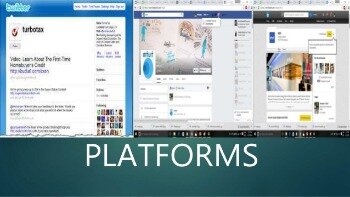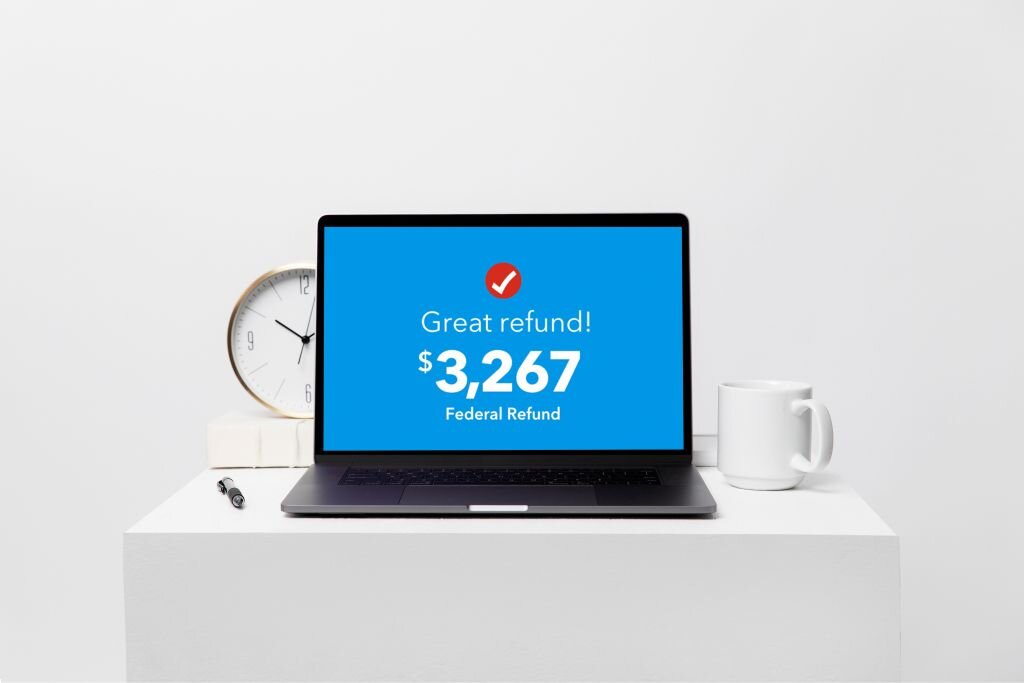Contents:


The business had planned to sell 25,000 units in 2022 at a price of $6.50. There were direct variable costs for materials $0.80, labour $1.00, overhead $0.50 and selling and administration $0.50. There were also fixed costs of $25,000 related to the factory and $25,000 related to selling and administration. A budget report is prepared to show how actual results compare to the budgeted numbers.
Comparing 2 education plans: which would you choose? - Albert ... - Albert Lea Tribune
Comparing 2 education plans: which would you choose? - Albert ....
Posted: Sat, 22 Apr 2023 01:47:44 GMT [source]
Editorial content from The Ascent is separate from The Motley Fool editorial content and is created by a different analyst team. Mary Girsch-Bock is the expert on accounting software and payroll software for The Ascent. If you're using the wrong credit or debit card, it could be costing you serious money. Our experts love this top pick, which features a 0% intro APR until 2024, an insane cash back rate of up to 5%, and all somehow for no annual fee. By submitting this form, you agree that Planergy may contact you occasionally via email to make you aware of Planergy products and services.
For instance, if the budget covered the production of 1,000 units, but only made 600 units, then the flexible budget adjusts to account for only the 600 actual units. The flexible budget shows the budgeted items from the static budget, including the cost and the expected sales, compared to the actual results. A flexible budget starts with fixed expenses, then layers a flexible budgeting system on top that allows for any fluctuation in costs. Most flexible budgets use a percentage of projected revenue to account for variable costs. This way, budget adjustments can happen in real time while taking into account external factors like economic shifts and rising competition.
Flexible Budgeting Explained: Definition and Tips for SaaS
A business generally uses a percentage or range of numbers to show the flex within the budget, which then creates budget scenarios based on other activities. Focus on the variable costs to see which ones are affected by other changes. Total net income changes as the amount for each line on the income statement changes. The net variance in this example is mainly due to lower revenues. The flexible budget supersedes the limitations of a fixed budget. Because it is a practical approach that is suitable for dealing with real-life situations.

Flexible budgets are especially beneficial in volatile periods or unpredictable markets. It is also a useful planning tool for managers, who can use it to model the likely financial results at a variety of different activity levels. A flexible budget adjusts based on changes in actual revenue or other activities. The result is a budget that is fairly closely aligned with actual results.
trade discount budgets change based on fluctuations with variable costs and have the ability to expand or contract in real time. Only accounts that are impacted by volume would be changed when converting the static budget to a flexible budget. This would basically just be revenue and variable cost accounts, which ultimately impact gross profit or contribution margin.
How Flexible Budgets Work
Lisa Jo Rudy covers entrepreneurship and small business finance and terms for The Balance. During her career, Lisa launched her own small writing and instructional design business and writes about business for major web publishers such as Harvard Business Publishing. As a teacher and instructional designer, Lisa has created business-related tutorials and interactive courses for universities, educational publishers, and students and adults entering the business world. It also depends upon the factors of the production, which are not in the hands of the management. Therefore the predictions can be inaccurate due to these conditions.
Most flexible budgets use a percentage of projected revenue to account for variable costs rather than assigning a rigid numerical value at the start. Total Overhead Costs$92,500Units Produced (70% capacity)17,500To keep the example simple, we assume that the first four costs are strictly variable and we will calculate a budget per unit for these costs. On the other hand, the last two costs, depreciation and supervision, are fixed costs and are assumed to be constant over the entire relevant range of activity meaning they do not change based on volume.
Unlike a static budget, which can be prepared in anticipation of performance, a flexible budget allows you to adjust the original master budget using actual sales and/or production volume. For accuracy, the variable cost should be used as a per unit or per activity level. Then, you compare the actual results with the forecast or plan budgets to analyze the variance. The activity level in the equation may refer to various cost drivers affecting the variable costs such as direct materials, labor hours, or sales commission. In Chapter 9, Using budgets to evaluate performance, we discussed the idea of a flexible budget – the restating of our original budget, but using the sales quantities that were actually recorded. The first is the static budget – our original budget – labelled static because it does not move or change.
Flexible Budget Practical Problems and Solutions FAQs
However, this approach ignores changes to other costs that do not change in accordance with small revenue variations. Consequently, a more sophisticated format will also incorporate changes to many additional expenses when certain larger revenue changes occur, thereby accounting for step costs. By incorporating these changes into the budget, a company will have a tool for comparing actual to budgeted performance at many levels of activity. Flexible budgets calculate, for example, different levels of expenditure for variable costs. Subsequently, the budget varies, depending on activity levels that the company experiences. Over time, though, your actual production, sales, and revenue will change.
9 Ways to Stick to your Budget and Jump Start your Savings - Kelowna Capital News
9 Ways to Stick to your Budget and Jump Start your Savings.
Posted: Mon, 17 Apr 2023 13:00:00 GMT [source]
However, some businesses may have a high level of indirect costs, making it difficult to separate fixed and variable costs from total indirect costs. The table below shows that Lobster Instant Noodles sold 7000 less units and instead of making a budgeted $42,500 of profit, instead made just $900. Of course, if you sell 18,000 less units, you would expect profit to be less – this is where the flexible budget comes in.
The flexible budget uses the same selling price and cost assumptions as the original budget. The variable amounts are recalculated using the actual level of activity, which in the case of the income statement is sales units. Instead of estimating production levels, use the actuals from the previous month to create your flexible budget. For instance, if your company produced 50,000 units in January, and you want to budget for 75,000 units in February, you have to look at your variable costs.
However, if actual performance in a given month or quarter is different from the planned amount, it is difficult to determine whether costs were controlled. ABC Company has a budget of $10 million in revenues and a $4 million cost of goods sold. Of the $4 million in budgeted cost of goods sold, $1 million is fixed, and $3 million varies directly with revenue. Thus, the variable portion of the cost of goods sold is 30% of revenues. Once the budget period has been completed, ABC finds that sales were actually $9 million.
Flexible budgets demand a bit of imagination and require time spent accounting for hypotheticals, but they allow businesses to adapt to changing external factors. Let's assume a company determines that its cost of electricity and supplies will vary by approximately $10 for each machine hour used. It also knows that other costs are fixed costs of approximately $40,000 per month. Typically, the machine hours are between 4,000 and 7,000 hours per month.
Process Flow of Budgeting
While accounting software is an important part of tracking all of your financial transactions, many software applications simply don’t have the capability of preparing a flexible budget. Expenses such as rent, management salaries, and marketing costs remain static and do not change based on production. Strategic Planning A Guide to the Strategic Budgeting Process in SaaS When it comes to budgeting and financial planning, today’s SaaS companies can benefit from greater flexibility and improved cost control. Learn more about strategic budgeting, and how it helps high-growth companies continue making proactive, strategic decisions.
And adverse or negative variance means the organization was not able to achieve its target plans. Because the budget can be made for any activity, the variance also needs to be analyzed separately for each activity. Variance analysis can help management understand the cost drivers and causes of the change whether the change is positive or negative. The initial estimate or static budget is a necessary part of planning. Creating a second, flexible budget allows a company to evaluate its actual performance during the static budget period.
Flexible Budgeting Advantages
If, however, the cost was identified as a fixed cost, no changes are made in the budgeted amount when the flexible budget is prepared. Differences may occur in fixed expenses, but they are not related to changes in activity within the relevant range. The original budget assumed 17,000 Pickup Trucks would be sold at $15 each. To prepare the flexible budget, the units will change to 17,500 trucks, and the actual sales level and the selling price will remain the same.
Which 2023 LG TV Should You Buy? - consumerreports.org
Which 2023 LG TV Should You Buy?.
Posted: Fri, 21 Apr 2023 09:56:15 GMT [source]
A flexible budget depends very much upon a forecast of past business performance. It also helps in the reclassification of various levels of budgeted costs along with sales so that managers can easily identify the profit areas and thus may act accordingly. The advanced budget, on the contrary, takes into consideration the expected variations and ranges of differences in expenses to be incurred. This type of budget is open to changes based on the variations in the actual cost of the different categories of expenses.
How do we create a flexible budget?
These changes can be due to variations such as changing inventory costs, supply chain concerns, and market conditions. You would then take your static, or master, budget and adjust the numbers based on your actual revenue. Once you have created your flexible budget, at the end of the accounting period you will want to compare the flexible budget totals against actuals. This comparison allows you to make any future adjustments based on the flexible budget variance indicated in the comparison. With flexible budgeting, managers will be able to plan and forecast more accurately. Performance management can be more meaningful as actual results can be easily compared to flexed results – total variances can then be calculated for each revenue and cost.

If that company produces 1,000 units and expects to make $4,000 but instead makes $4,200, then the variance would be $200. Kristen has her Bachelor of Arts in Communication with certificates in finance, marketing, and graphic design. She is a small business contributing writer for a finance website, with prior management experience at a Fortune 100 company and experience as a web producer at a news station.
The flexible budget can help to measure the performance of employees and managers. Input any changes or adjustments for a specific accounting period when it has completed. However, it is suitable when there is a probability of fluctuations in fixed costs. It analyses the costs with respect to the variations in the output levels. Consequently, the categorization of cost takes place under Fixed, Variable and Semi-variable.
- Any unexpected market shifts may find a material essential to your production line suddenly costing more than three times the original budgeted amount.
- Variable costs assigned to sales activity or in percentage terms provide greater flexibility in profit analysis.
- During her career, Lisa launched her own small writing and instructional design business and writes about business for major web publishers such as Harvard Business Publishing.
- Lobster Instant Noodles make instant ramen noodles in cups that are commonly eaten by university students across the world.
- For control purposes, the accountant then compares the budget to actual data.
Flexible budgeting puts more pressure on you to have rock-solid financial assumptions as you tie various line items together in the model. And the reality is that the effort you put into tying certain line items together may not be worth the time. Not every line item or set of line items has a strong enough correlation to others for flexible budgeting to work. Choosing the wrong pieces of the budget to tie together can lead to significant inaccuracies in forecasts.
Small companies and startups may even miss out on new sources of income. For costs that vary with volume or activity, the flexible budget will flex because the budget will include a variable rate per unit of activity instead of one fixed total amount. In short, the flexible budget is a more useful tool when measuring a manager's efficiency. While preparing any budget at all is always better than not having one, a static budget does not prepare you for revenue and expense changes in real time. Flexible budgets can also be used after an accounting period to evaluate the successful areas and unsuccessful areas of the last period performance. Management carefully compares the budgeted numbers with the actual performance statistics to see where the company improved and where the company needs more improvement.